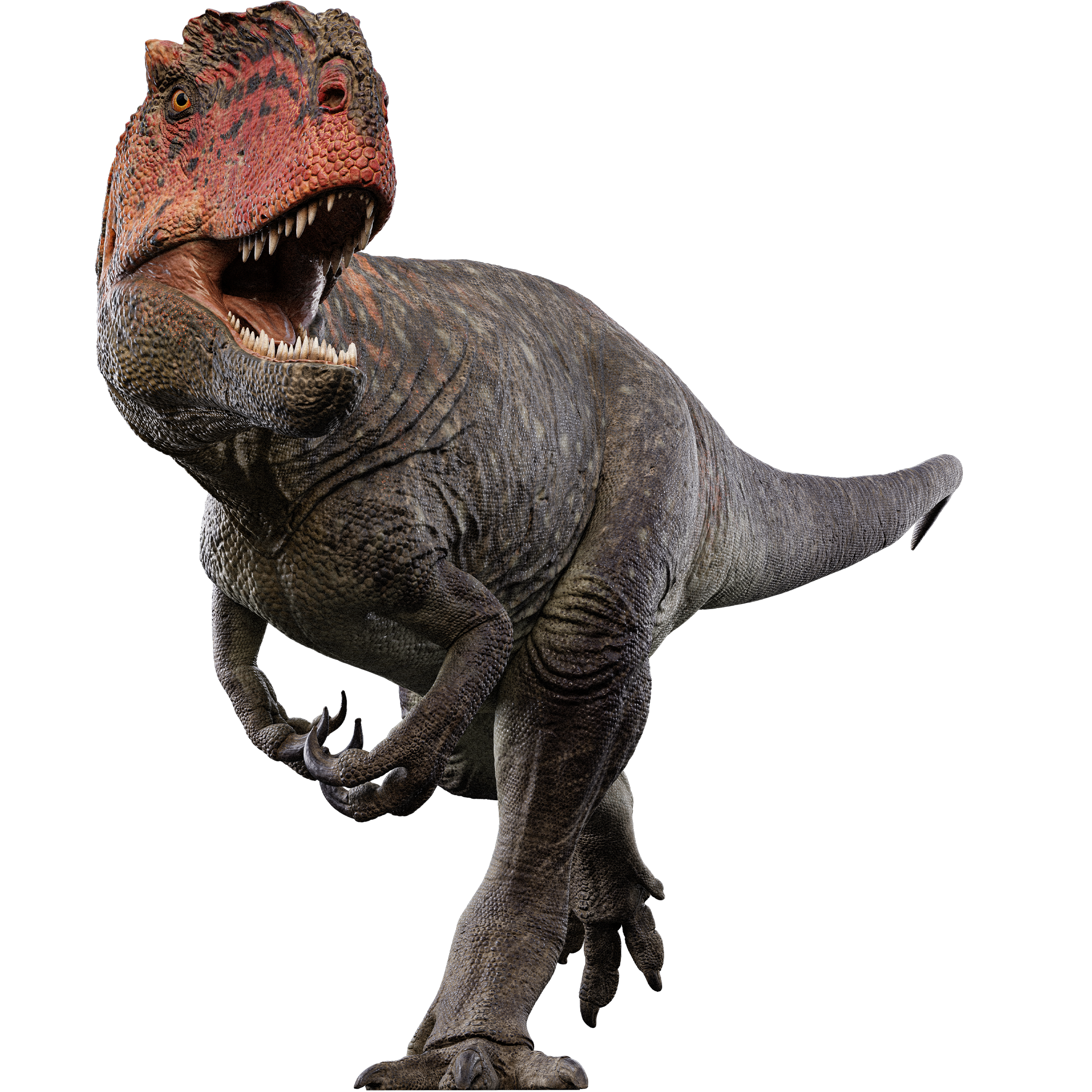The Jurassic King of Kyrgyzstan
Crowned with rugose display crests over its eyes, this Kyrgyzstani "King" offers insight into the biogeography of the predatory metriacanthosaurids, a group of allosauroids which ruled Eurasia during the Jurassic!
Overview: Alpkarakush kyrgyzicus was a metriacanthosaurid allosauroid discovered in Kyrgyzstan in the 21st Century. A large carnivore, it was likely the apex predator of its environment, crowned with rugose display crests over its eyes. It is one of a number of metriacanthosaurids hailing from central and east Asia, providing more evidence that this family of allosauroids had a particularly close association with the region and likely originated there.
Discovery: Alpkarakush kyrgyzicus was discovered in rocks of the Middle Jurassic Balabansai Formation, in Uurusai Valley near Tashkumyr in Jalal-Abad Region of Kyrgyzstan in expeditions between 2005 and 2023. Rauhut et al. described Alpkarakush kyrgyzicus in 2024, naming it after a powerful bird called “Alpkarakush” in the mythical Epic of Manas. The species name honors the name of the country in which it was found, Kyrgyzstan, or more officially, the Kyrgyz Republic. Two partial skeletons have been discovered. The holotype, which was probably nearly full grown, consists of skull bones (two postorbitals and a quadratojugal), several partial dorsal vertebrae, ribs, a manual phalanx (finger bone) and ungual (claw), most of the pelvis and five sacral vertebrae, and most of the hindlimbs. The second specimen was a younger/smaller individual consisting of a partial pelvis and right tibia. Teeth and a furcula (wishbone) from the same locality have also been referred to the species. The remains of Alpkarakush are housed in the Paleontological Collection of the Institute of Geology of the Kyrgyz National Academy of Sciences.
Evolution: Alpkarakush was an allosauroid in the family Metriacanthosauridae. The high concentration of metriacanthosaurid taxa in central and eastern Asia, Alpkarakush included, suggests that this family likely originated in that region. The earliest known metriacanthosaurid was Shidaisaurus, hailing from China 174 million years ago, which supports this hypothesis. Over the next several million years, several genera evolved in Asia, and eventually by about 160 million years ago, they seem to have reached Europe in the form of Metriacanthosaurus and possible metriacanthosaurid remains from France. Alpkarakush appeared in Kyrgyzstan about 165-164 million years ago.
Description: Alpkarakush fragilis had a typical large theropod body plan. It was bipedal, and would have had a large skull, a relatively short neck and a long tail which would have been held horizontally, acting to counterbalance the front of the animal. Like most other theropods, Alpkarakush had functionally tridactyl feet, with digits II-IV bearing the animal’s weight, in addition to a reduced digit I, called a dewclaw, which did not touch the ground. The arms were comparatively short and bore three fingers, each tipped with a curved claw which would have aided the predator in grasping prey.
Alpkarakush was a large theropod, measuring 7–8 m (23–26 ft) in length, though the holotype, a ~17-year-old subadult/young adult, was probably still growing slowly and thus may have gotten slightly longer had it not died when it did. Based on the similarly sized and closely related Sinraptor, Alpkarakush may have weighed in the ballpark of 1.3 tonnes (1.4 tons). Like other metriacanthosaurids, Alpkarakush probably had a high, arched skull and relatively slender hindlimbs. This family also bore ornamental brow crests/hornlets over their eyes, and those of Alpkarakush were especially prominent and rugose.
Like other theropods, Alpkarakush likely would have had an avian-style respiratory system and was probably also warm blooded. It is unknown if Alpkarakush had feathers or scales or both. Warm-blooded animals often have a covering of fur or feathers, but many large theropods, based on skin impressions, seemed to lack feathers, despite being likely endotherms. One such genus was Allosaurus, the North American relative of Alpkarakush.
Behavior and Ecology: Alpkarakush was carnivorous and most likely the apex predator in its environment, which also included ornithopods, stegosaurs, and the sauropod Ferganasaurus. Little else is known about Alpkarakush’s environment, ecology, or behavior as it is a recently discovered species from an under-studied geologic formation. However, its prominent brow ornamentation suggests that these were somewhat showy animals, probably using these ornamentations to attract mates and intimidate rivals.
Extinction and Legacy: It is not known when or why Alpkarakush went extinct, but it is only known from the Callovian Age of the Middle Jurassic. However, it was succeeded by other metriacanthosaurids such as the Chinese Sinraptor and Yanchuanosaurus. Metriacanthosauridae as a family would continue through the Late Jurassic and into the Early Cretaceous. The remains of Alpkarakush are housed in the Paleontological Collection of the Institute of Geology of the Kyrgyz National Academy of Sciences in Bishkek, Kyrgyzstan.
Alpkarakush FAQ
Alpkarakush size / How big was Alpkarakush?
See weight and length.
Alpkarakush weight / How much did an Alpkarakush weigh?
Alpkarakush probably weighed in the ballpark of 1.3 tonnes (1.4 US tons) based on its close relative Sinraptor which was about the same size.
How long was Alpkarakush? / Alpkarakush length
Alpkarakush was 7–8 m (23–26 ft) long.
How tall was Alpkarakush?
Alpkarakush would have stood around 2.71 meters (8.89 ft) tall
What did Alpkarakush eat?
Alpkarakush ate meat, specifically other dinosaurs, possibly including the sauropod Ferganosaurus.
What is Alpkarakush’s closest living relative?
Like all dinosaurs, the closest relatives of Alpkarakush are the only surviving lineage of dinosaurs today, the birds. Crocodilians, while not dinosaurs themselves, are also more distant cousins of dinosaurs.
Alpkarakush family members / Alpkarakush family / What kind of dinosaur was Alpkarakush?
Alpkarakush was a theropod (two-legged, mainly carnivorous dinosaurs) in the clade Allosauroidea and the family Metriacanthosauridae, making it a close relative of Sinraptor, Yanchuanosaurus, and Metriacanthosaurus, and a more distant cousin of Allosaurus.
Where did Alpkarakush live? / Where was Alpkarakush found?
Alpkarakush lived in what is now Kyrgyzstan.
When did Alpkarakush live?
Alpkarakush lived about 165-164 million years ago in the Callovian Age of the Middle Jurassic Period.
What does Alpkarakush mean? / Alpkarakush name meaning
Alpkarakush is the name of a mythical bird from the Epic of Manas.

